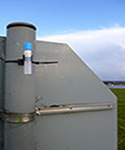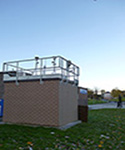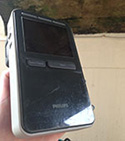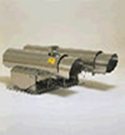Air pollution is monitored at certain sites around Jersey 24 hours a day. There are many different ways of sampling the air to check how polluted it is.
Ways to sample ambient air
There are 5 main methods of sampling air quality:

1. Passive Monitoring
- Diffusion tubes absorb a specific pollutant from the ambient air - no power supply is needed
- Diffusion tubes normally monitor for 2-4 weeks at a time
- The tubes must be sent to a laboratory for analysis to see how much pollution they have detected
- There are eighteen NO2 and five VOC (Volatile Organic Compound) monitoring locations on Jersey

2. Active (Semi Automatic) Sampling
- An analyser pulls the ambient air through a filter for a set period of time e.g. one filter per day
- The filters are then collected and sent to a laboratory for analysis to see how much pollution they have detected

3. Automatic point monitoring
- Ambient air is pulled through an analyser which recognises the chosen gas and will calculate its concentration
- Automatic sites monitor pollutants 24 hours a day
- Data is sent from the site directly to your computer, tablet or smartphone which means it can be seen instantly
- There are two automatic monitoring locations on Jersey
All the information gathered from automatic point monitoring sites is published online to let the public know what the current air quality is like. More information can be found on the States of Jersey government environment pages.

4. Photochemical and optical sensor systems
- These are portable monitoring tools that can continuously monitor a range of pollutants. The sensors are of low sensitivity and mostly suitable for identifying hotspots at roadsides and near point sources.
- Data can be downloaded to your computer and analysed.

5. Remote optical/long-path monitoring
- This method of sampling detects pollution between a light source and a detector which are placed separately at a site.
- Real time measurements can be taken with this type of sampling.
- Data can be sent from the analyser directly to your computer which means it can be seen instantly.
